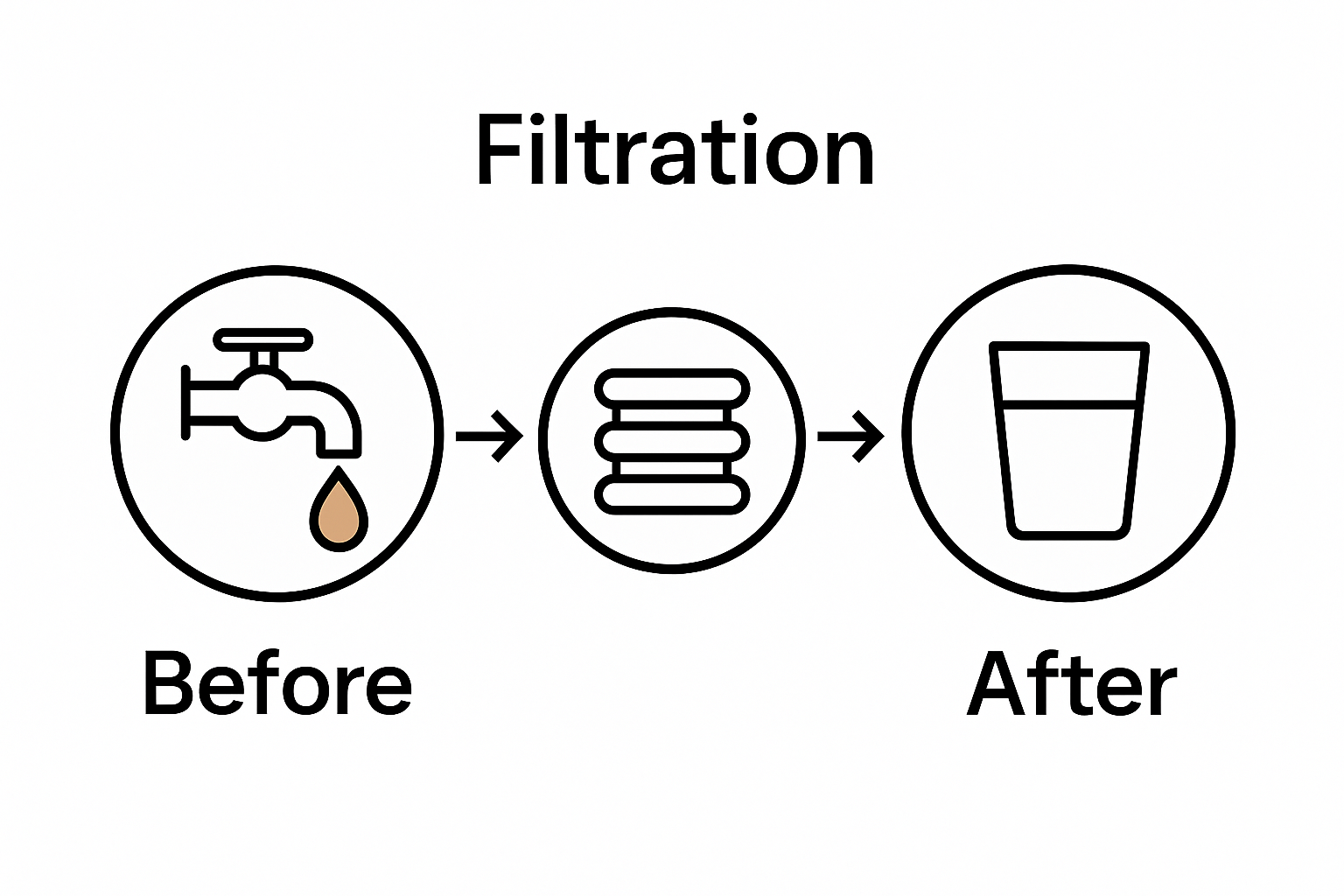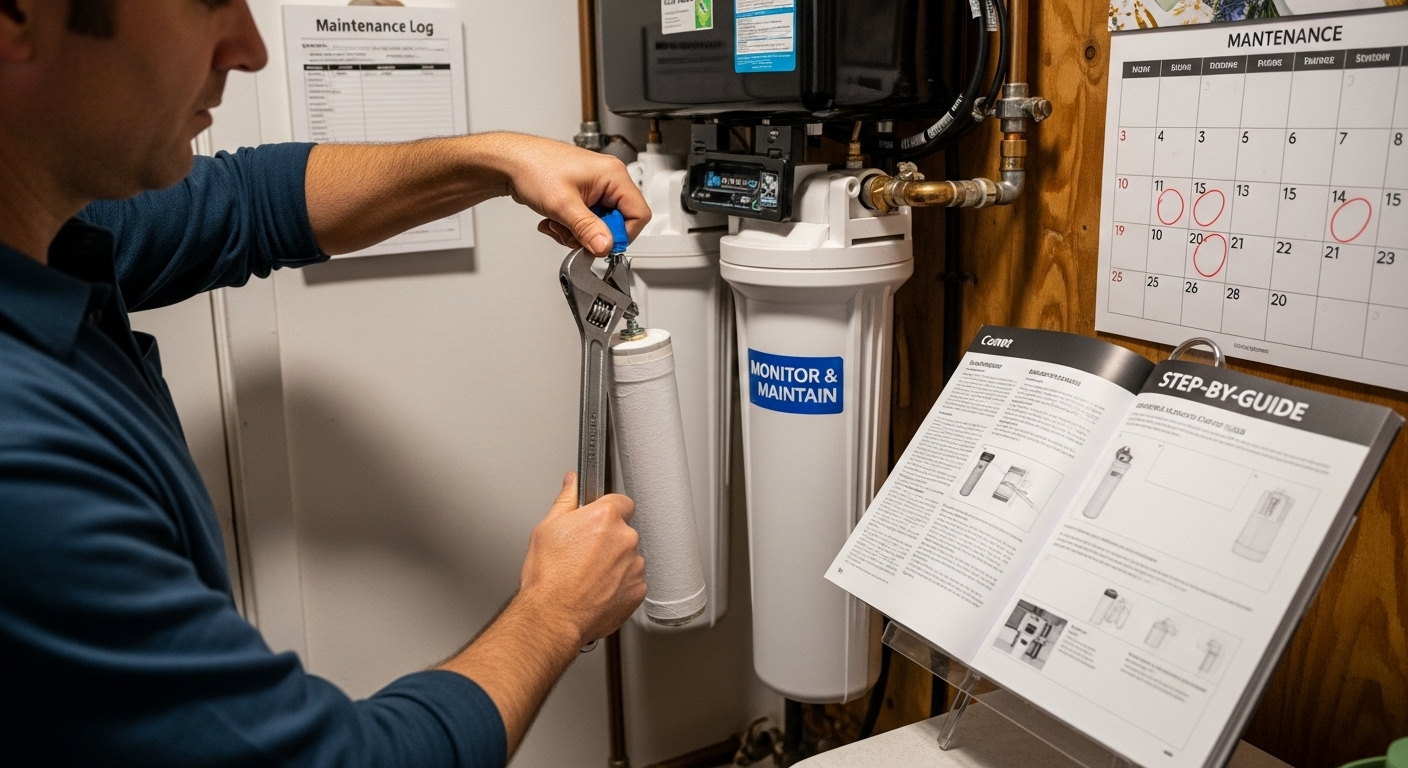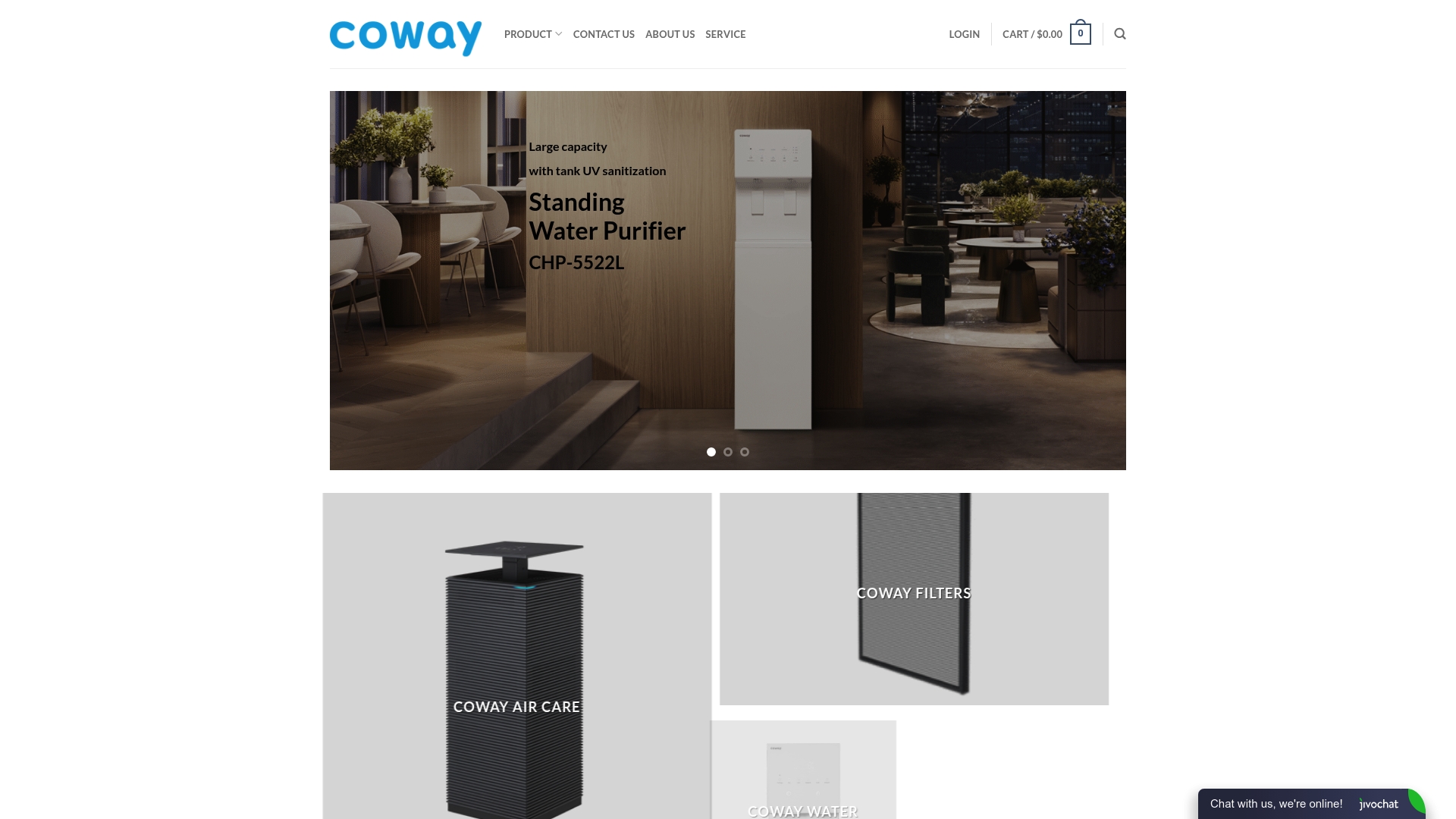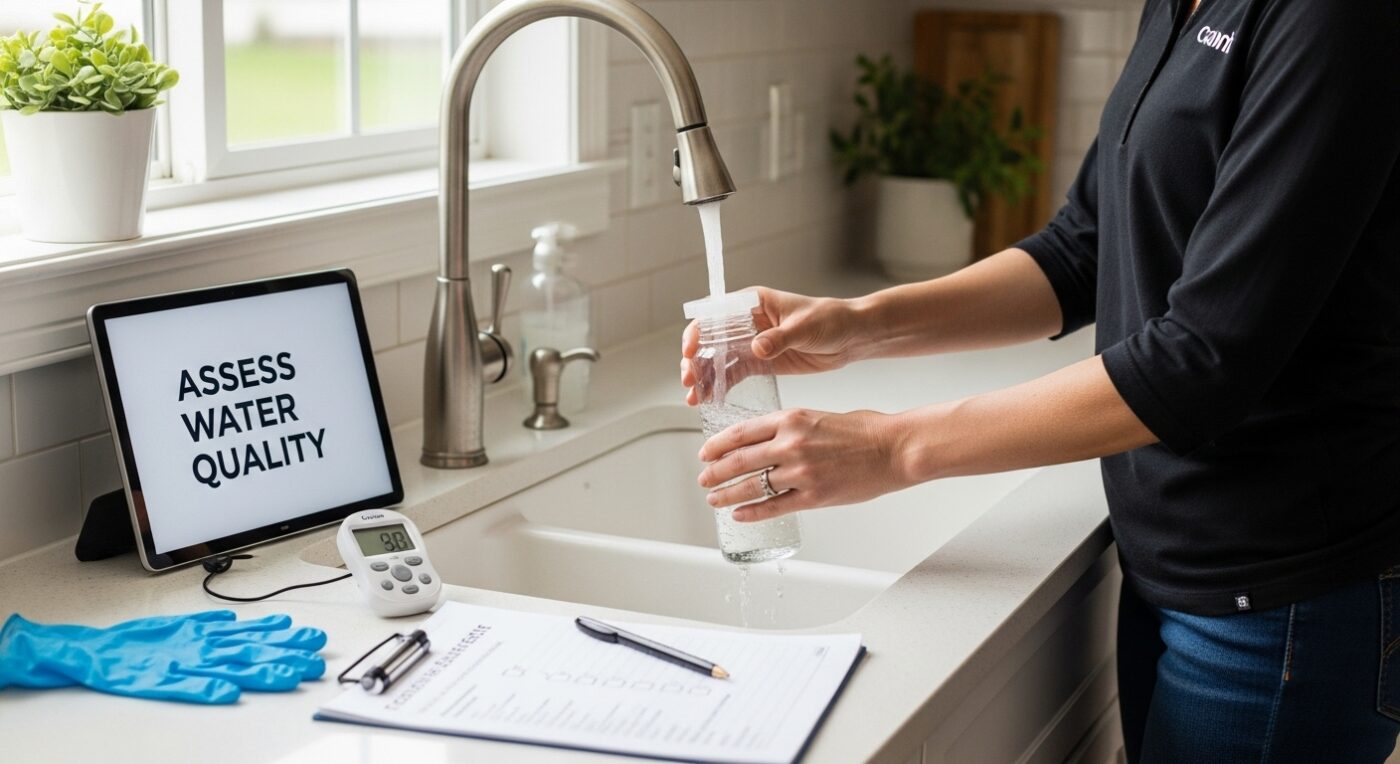Uncategorized
Complete Water Filtration Process Guide for Homeowners
Clean tap water seems like a given, but millions of American homes face a hidden risk from contaminants every day. Shockingly, over 10 million U.S. households rely on water from sources at risk of pollution. Yet most people never actually test what flows from their own faucets. The final surprise? Protecting your family’s health is not about buying the fanciest filter, but about following a clear, step-by-step plan to match the right solution for your home’s unique water quality.
Table of Contents
- Step 1: Assess Your Current Water Quality
- Step 2: Research Filtration Options Available
- Step 3: Select And Purchase The Right Filtration System
- Step 4: Install The Water Filtration System
- Step 5: Test Water Quality Post-Installation
- Step 6: Maintain And Monitor Your Filtration System
Quick Summary
| Key Point | Explanation |
|---|---|
| 1. Assess your water quality regularly | Conduct a comprehensive water quality test annually to identify contaminants and health risks. |
| 2. Research filtration options diligently | Understand various filtration systems and match them to specific contaminants found in your water. |
| 3. Follow installation guidelines carefully | Adhere to manufacturer instructions for proper setup to ensure efficient system performance. |
| 4. Test water quality post-installation | Schedule professional testing after installation to confirm the system effectively removes contaminants. |
| 5. Maintain and monitor your system regularly | Establish a maintenance schedule for filter replacements and inspections to ensure ongoing filtration effectiveness. |
Step 1: Assess Your Current Water Quality
Understanding your home’s water quality is the critical first step in creating an effective water filtration strategy. This foundational assessment helps you identify specific contaminants, potential health risks, and the most appropriate filtration solutions for your unique water profile.
To begin your water quality assessment, you’ll need to collect a comprehensive water sample for professional testing. While home testing kits provide basic insights, professional laboratory analysis offers the most accurate and detailed results. Contact your local health department or a certified water testing laboratory to request a comprehensive water quality test kit. These professional tests typically examine multiple parameters including bacterial contamination, heavy metals, mineral content, and potential chemical pollutants.
When collecting your water sample, follow these precise guidelines to ensure accurate results. Use a sterile collection container provided by the testing laboratory, typically a special bottle with specific preservation instructions. Collect the sample directly from your primary water source, such as the kitchen tap, using cold water and allowing it to run for several minutes before filling the container. Avoid touching the inside of the container or the collection area to prevent potential contamination. Learn more about professional water testing methods will help you understand the nuanced process of water quality evaluation.
Once you receive your laboratory results, carefully review the detailed report. Look for key indicators that might require specific filtration strategies:
- Elevated levels of lead, mercury, or other heavy metals
- Presence of bacterial contamination
- High mineral content causing hard water
- Unusual pH levels
- Detected chemical compounds
These results will serve as your roadmap for selecting the most appropriate water filtration system, ensuring you target the exact contaminants present in your water supply. By thoroughly assessing your current water quality, you’re taking a proactive step toward ensuring your family’s health and safety.
Remember, water quality can change over time, so plan to repeat this assessment annually or whenever you notice significant changes in water taste, odor, or appearance.
Step 2: Research Filtration Options Available
With your water quality assessment complete, the next crucial step is exploring the diverse world of water filtration technologies. This research phase helps you match specific filtration solutions to the unique contaminants identified in your initial water quality test. Understanding the range of available options will empower you to make an informed decision that protects your family’s health and enhances your home’s water quality.
Water filtration technologies vary widely, each designed to target different types of contaminants. Activated carbon filters excel at removing chlorine, sediment, and organic compounds, making them excellent for improving taste and odor. Reverse osmosis systems provide comprehensive filtration, removing up to 99% of dissolved solids, including heavy metals and microscopic contaminants. Ultraviolet purification offers robust protection against bacterial and viral threats, using specialized light technology to neutralize microorganisms. Explore our comprehensive guide on water purification methods to dive deeper into these technologies.
As you research, consider key factors that will influence your filtration choice. Evaluate your household’s daily water consumption, available installation space, and budget constraints. Some systems require professional installation, while others are designed for easy do-it-yourself setup.
Pay attention to maintenance requirements, filter replacement costs, and the system’s long-term efficiency.
To streamline your research, create a comparison chart that includes:
- Filtration technology type
- Contaminant removal capabilities
- Initial and ongoing costs
- Maintenance requirements
- Warranty and manufacturer reputation
- Installation complexity
Consult multiple sources including manufacturer specifications, independent consumer reviews, and professional water treatment experts. Local water treatment professionals can provide valuable insights specific to your region’s water characteristics. Remember that no single filtration system is universally perfect your goal is finding the most suitable solution for your specific water quality profile and household needs.
Below is a comparison table of common water filtration technologies discussed in the guide to help homeowners match systems to their unique water quality needs.
| Filtration Technology | Main Contaminant Removal | Installation Complexity | Maintenance Frequency | Notable Benefits |
|---|---|---|---|---|
| Activated Carbon Filter | Chlorine, sediment, organic compounds | Low to moderate | Every 3-6 months | Improves taste and odor |
| Reverse Osmosis System | Heavy metals, dissolved solids | Moderate to high | Every 6-12 months | Comprehensive contaminant removal |
| Ultraviolet Purification | Bacteria, viruses | Moderate | Every 12 months | Neutralizes microorganisms |
Step 3: Select and Purchase the Right Filtration System
Transitioning from research to selection requires careful consideration of multiple factors to ensure you invest in a water filtration system that precisely matches your household’s needs. Your water quality test results will be the primary compass guiding this critical decision, directing you toward the most appropriate filtration technology for your specific contamination profile.
Begin by cross-referencing your water quality report with potential filtration systems. Pay close attention to each system’s certified contaminant removal capabilities, ensuring they align directly with the specific pollutants identified in your initial assessment. Some systems offer comprehensive multi-stage filtration, while others specialize in targeting particular contaminants. Look for systems with clear documentation about their filtration efficiency, preferably with certifications from recognized testing organizations.
Budget plays a significant role in your selection process, but resist the temptation to choose solely based on price. Consider the total cost of ownership, which includes initial purchase price, installation expenses, and ongoing maintenance costs like filter replacements. Calculate the annual operating expense to understand the true long-term investment. Learn more about understanding water filter lifespan and maintenance to make a more informed decision.
When evaluating potential systems, create a detailed comparison that includes:
- Total contaminant removal percentage
- Flow rate and water output capacity
- Filter replacement frequency
- Warranty coverage
- Installation requirements
- Energy efficiency
Consider consulting with a local water treatment professional who can provide personalized recommendations based on your specific water quality report. They can offer insights into local water characteristics and help you navigate the complex landscape of filtration technologies. Some professionals might even recommend custom solutions tailored to your unique water profile.
Before making a final purchase, request product demonstrations, read comprehensive customer reviews, and verify the manufacturer’s reputation for customer support and product reliability. Your goal is finding a filtration system that not only removes contaminants effectively but also integrates seamlessly into your home’s existing water infrastructure.
Step 4: Install the Water Filtration System
With your carefully selected water filtration system in hand, the installation process becomes the critical bridge between research and clean water protection. Installation complexity varies significantly depending on the type of filtration system you’ve chosen, ranging from simple countertop units to more intricate under-sink or whole-house systems that may require professional assistance.
Before beginning installation, gather all necessary tools and carefully review the manufacturer’s installation manual. Shut off your main water supply to prevent potential leaks or water damage during the process. Typical tools you’ll need include an adjustable wrench, Teflon tape, plumber’s tape, a bucket for catching potential water spillage, and potentially a drill if mounting hardware is required. Take time to inspect all included components, ensuring nothing is damaged or missing before starting the installation.
For point-of-use systems like under-sink filters, you’ll typically need to create a connection to your existing water line and install a separate dispensing faucet. This might involve cutting into existing plumbing, which can be intimidating for those without prior experience. Discover essential water filter maintenance tips to help you understand the nuances of proper system setup and long-term care.
Key installation considerations include:
- Precise alignment of filter components
- Secure and leak-free connections
- Proper orientation of water flow direction
- Compatibility with existing plumbing infrastructure
After physical installation, you’ll need to thoroughly flush the system according to manufacturer instructions. This initial flushing process removes any manufacturing residues and prepares the filter for optimal performance. Run water through the system for the recommended duration, typically 5-10 minutes, and discard the initial output. Pay close attention to water pressure, flow rate, and any unusual sounds or leaks during this initial operation.
If you encounter challenges during installation or feel uncomfortable with any steps, do not hesitate to contact a professional plumber. While many systems are designed for DIY installation, complex setups or unfamiliar plumbing configurations might require expert intervention to ensure proper function and prevent potential water damage.
Step 5: Test Water Quality Post-Installation
After installing your water filtration system, verifying its performance becomes the critical final step in ensuring your household’s water safety. Post-installation testing is not merely a recommendation but a crucial validation of your filtration system’s effectiveness. This process confirms that the system successfully removes the specific contaminants identified in your initial water quality assessment.
Schedule professional water testing approximately two weeks after installation to allow the system sufficient time to stabilize and demonstrate its full filtration capabilities. During this period, carefully observe your water’s taste, odor, and clarity. Significant improvements should be noticeable, but professional testing provides the most accurate and comprehensive results. Professional laboratory analysis can detect microscopic changes that your senses might miss.

When selecting a testing laboratory, choose a certified facility with experience in comprehensive water quality analysis. Discover essential water filter maintenance tips to understand how ongoing care impacts your system’s performance. Request a detailed report that compares your water’s current contamination levels with the pre-installation baseline. Pay special attention to:
- Reduction in heavy metal concentrations
- Elimination of bacterial presence
- Changes in mineral content
- pH level adjustments
- Removal of chemical compounds
If the test results reveal any unexpected outcomes, do not panic. Some variations are normal during initial system operation. Contact the manufacturer or a water treatment professional to interpret the results and determine whether any system adjustments are necessary. Some filtration systems require minor calibration or additional maintenance to achieve optimal performance.
Establish a routine testing schedule moving forward. While immediate post-installation testing is crucial, continuing to monitor your water quality annually ensures long-term protection. Keep detailed records of each test, creating a comprehensive history of your home’s water quality evolution. This documentation can help you track the ongoing effectiveness of your filtration system and make informed decisions about future maintenance or upgrades.
Step 6: Maintain and Monitor Your Filtration System
Consistent maintenance transforms your water filtration system from a simple appliance into a long-term health protection mechanism. The effectiveness of your filtration investment depends entirely on proactive, systematic monitoring and timely interventions. Regular maintenance not only preserves your system’s performance but also prevents potential water quality degradation and expensive future repairs.
Establish a comprehensive maintenance schedule that aligns with the manufacturer’s recommendations. Filter replacement represents the most critical maintenance task, with intervals typically ranging from three to six months depending on your specific system and water usage. Mark filter replacement dates on your calendar, and consider setting digital reminders to ensure you never miss a crucial maintenance window. Understand why changing purifier filters matters for your health to appreciate the importance of this routine.
Monitoring your system involves more than just replacing filters. Regularly inspect all system components for signs of wear, corrosion, or potential leaks. Check connections, examine filter housings, and listen for unusual sounds during water flow. Pay attention to subtle changes in water taste, odor, or pressure, as these can indicate emerging filtration system issues before they become significant problems.
Key maintenance checklist items include:
- Quarterly visual inspection of all system components
- Timely filter replacements according to manufacturer specifications
- Cleaning external surfaces and connection points
- Checking water pressure and flow rate
- Reviewing system performance logs
Consider maintaining a detailed maintenance log that tracks filter replacements, inspection dates, and any observed changes. This documentation serves multiple purposes: it helps you track system performance, provides valuable information for troubleshooting, and can be useful if you need to invoke warranty services. Some advanced filtration systems offer digital tracking through smartphone applications, making maintenance monitoring more convenient and precise.

If you encounter persistent issues or notice significant changes in water quality, do not hesitate to contact the manufacturer’s technical support or a professional water treatment specialist.
Here is a checklist table summarizing essential maintenance tasks to ensure ongoing water filtration system performance and health protection.
| Maintenance Task | Recommended Frequency | Purpose |
|---|---|---|
| Replace filters | Every 3-6 months (varies) | Maintains filtration effectiveness |
| Visual inspection of components | Quarterly | Identify wear, leaks, or damage |
| Clean external surfaces/connection points | Quarterly | Prevents buildup and corrosion |
| Monitor water pressure and flow | Monthly | Detects emerging system issues |
| Review system performance logs | Annually or as available | Tracks performance and trends |
Ready to Experience Pure, Worry-Free Water at Home?
After learning how crucial thorough water testing and the right filtration system are for protecting your health, you deserve a solution that fits your unique needs. Many homeowners struggle with hidden contaminants, the hassle of ongoing maintenance, and the stress of finding a trusted product that really works. With Coway, concerns like heavy metals, bacteria, and chemical pollutants become things of the past thanks to our scientifically developed filtration technology and all-inclusive service.

Transform your water with ease today. Explore Coway’s range of water purifiers to find advanced countertop, under-sink, or large-capacity units created for every home and water composition. Need help choosing? Start by visiting our Water Purification Methods Guide for expert advice, or learn why maintenance and filter changes truly matter for your family’s health in our Filter Lifespan and Maintenance resource. Every model includes free installation, professional servicing, and a commitment to ongoing health protection. The quality of your water—and your peace of mind—cannot wait. Visit https://cowayswaterpurifier.com now and take the next step toward safe, pure water for your family.
Frequently Asked Questions
What is the first step in assessing my home’s water quality?
Understanding your home’s water quality begins with collecting a comprehensive water sample for professional testing. This will help you identify specific contaminants and determine the most effective filtration solutions.
How often should I test my water quality after installation of a filtration system?
It is recommended to test your water quality annually or whenever you notice significant changes in water taste, odor, or appearance to ensure the filtration system remains effective.
What types of water filtration technologies are available?
Common water filtration technologies include activated carbon filters for chlorine and sediment removal, reverse osmosis systems for comprehensive filtration of dissolved solids, and ultraviolet purification for neutralizing microorganisms.
How do I maintain my water filtration system?
Regular maintenance includes timely filter replacements, periodic visual inspections of system components, and monitoring water pressure and flow rate to ensure optimal performance.
Recommended
- 7 Essential Water Filter Maintenance Tips for Homeowners – Coway Water Purifier
- What is Water Purification? Understanding Its Importance – Coway Water Purifier
- 7 Effective Water Purification Methods for Your Home – Coway Water Purifier
- What is Under-Sink Water Purifier? Understanding Its Importance – Coway Water Purifier

